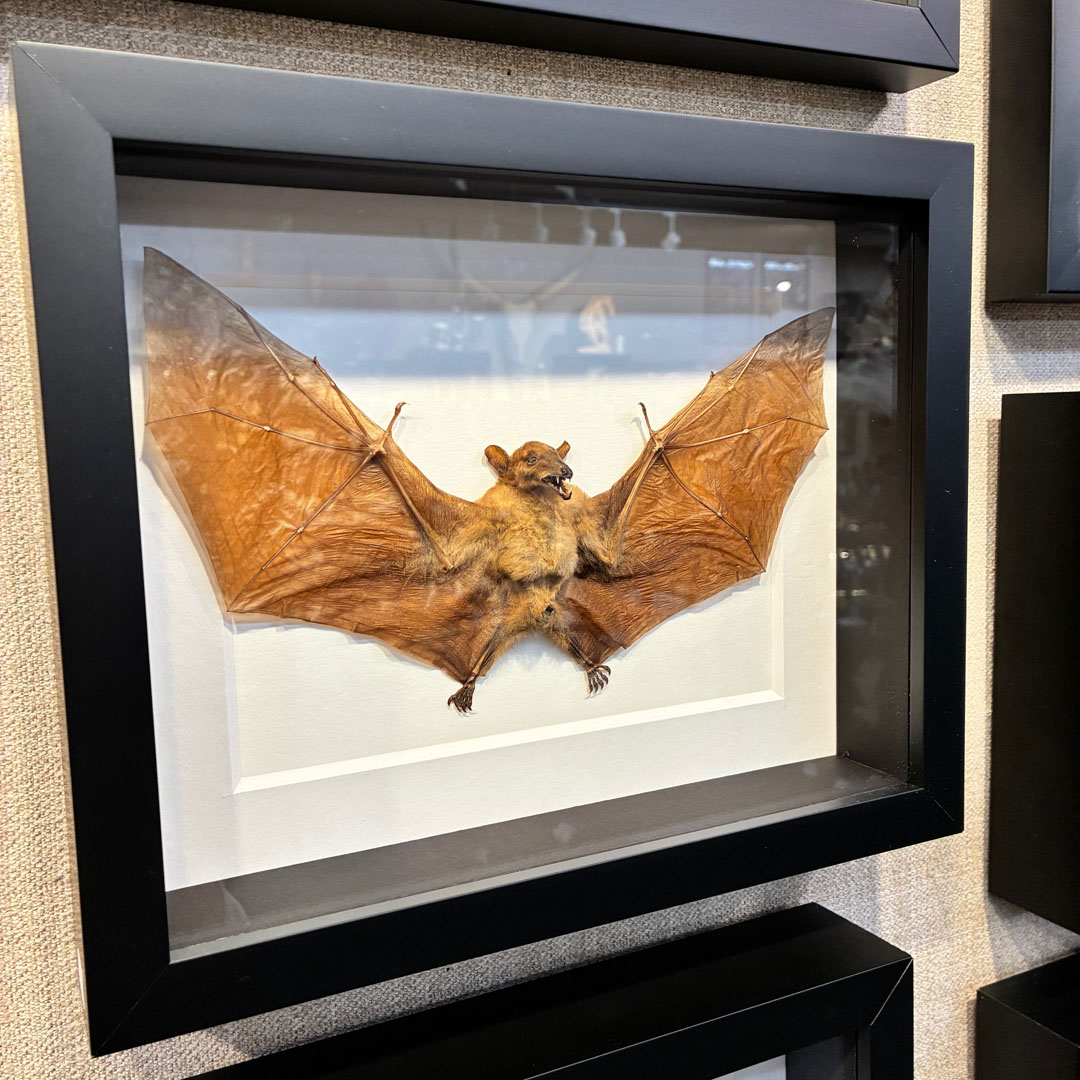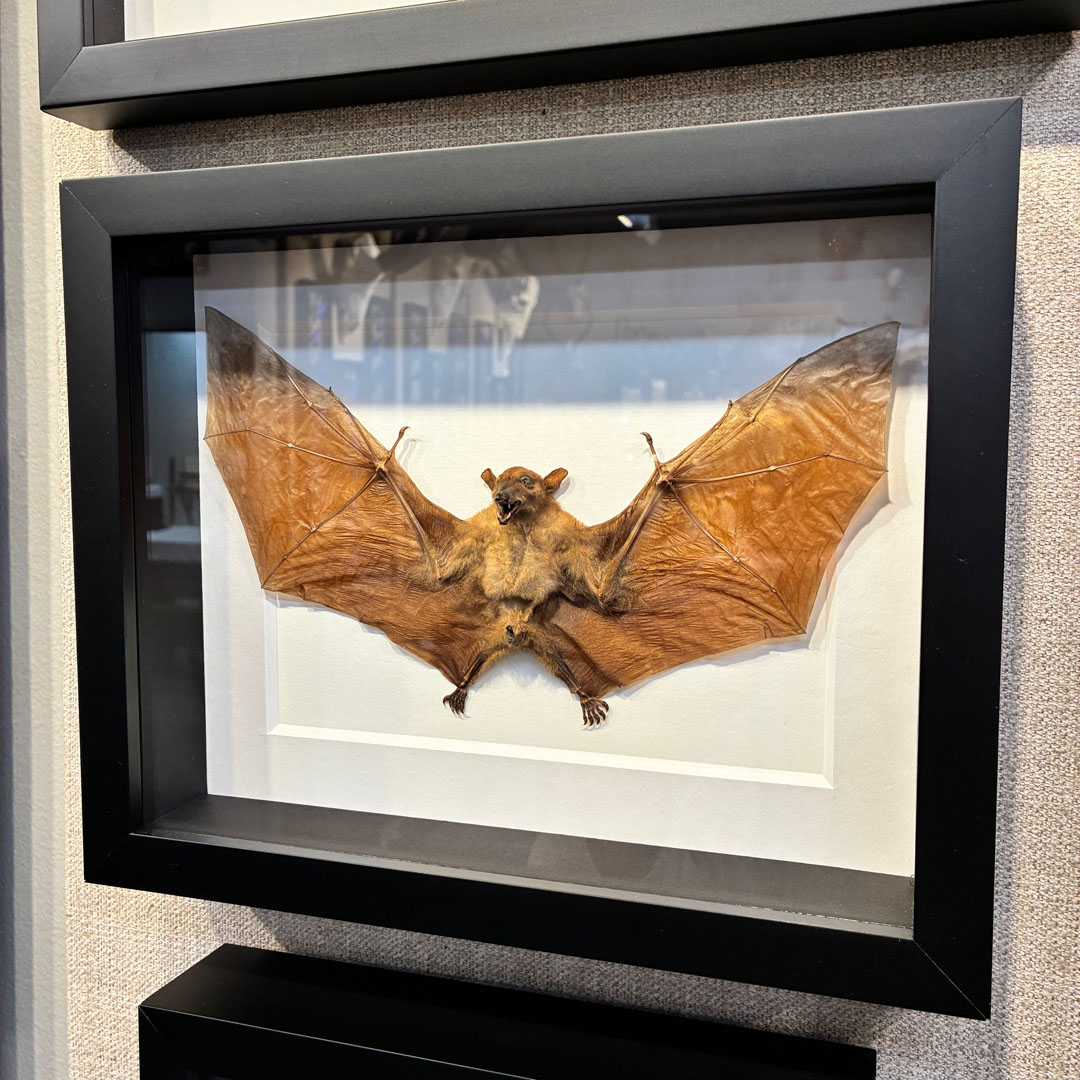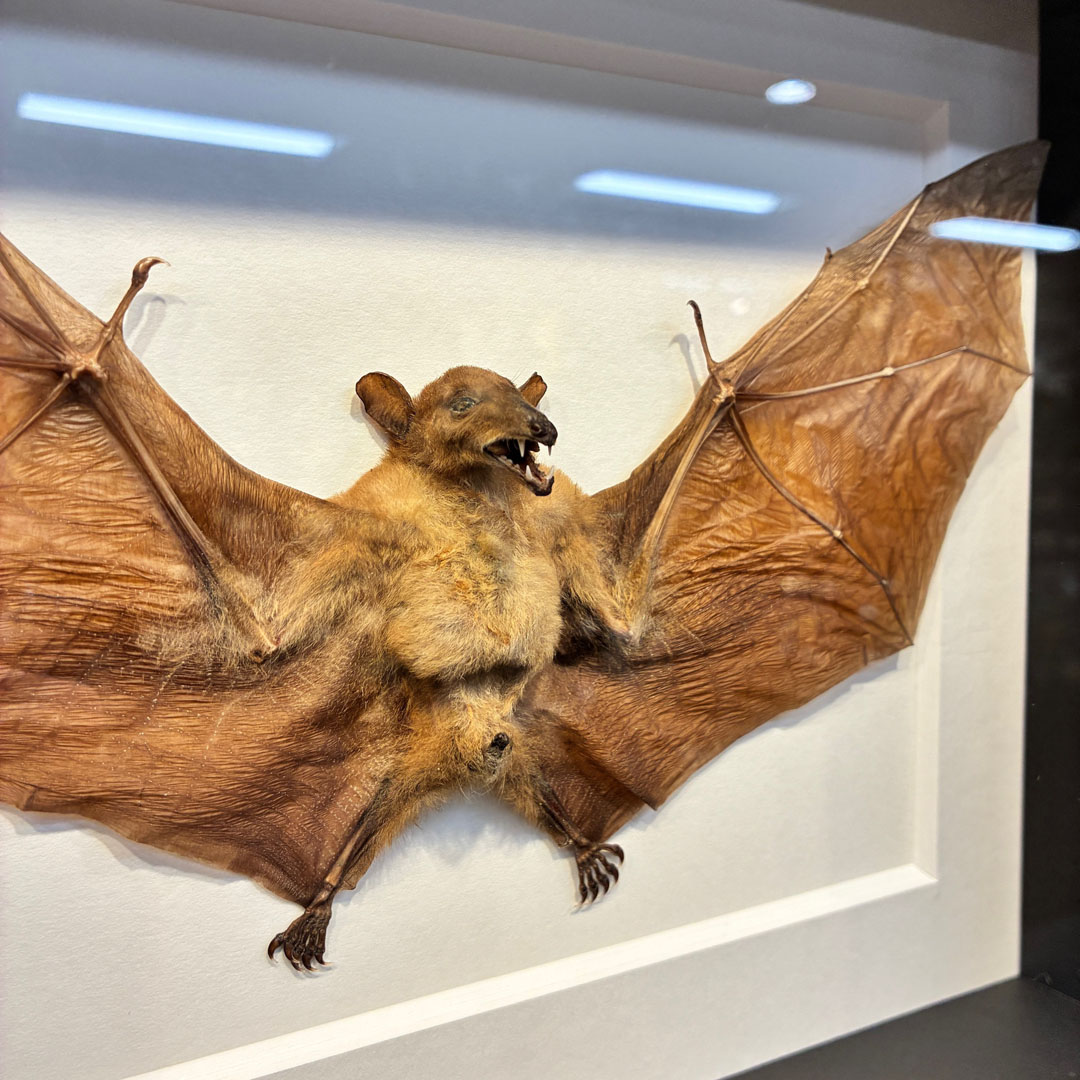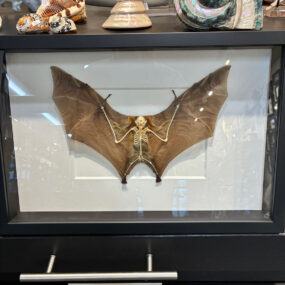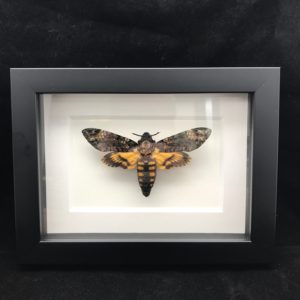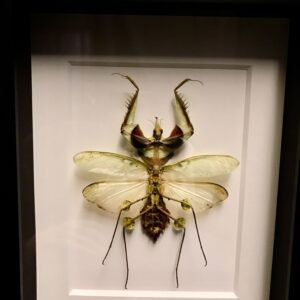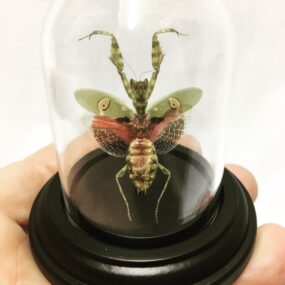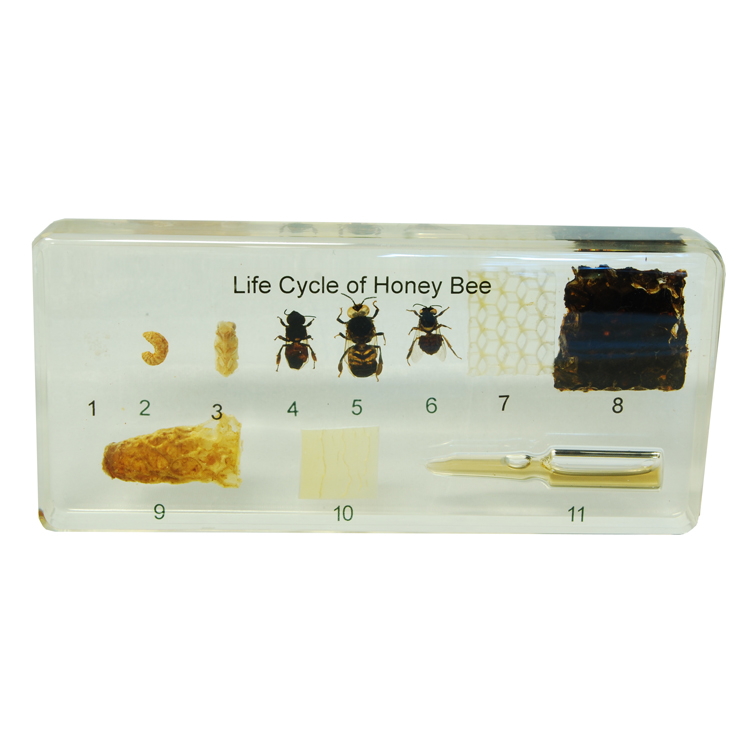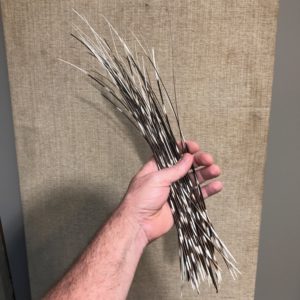Description
Long-tongued Nectar Bat, Spread wings, and mounted in a Black Wooden Frame.
Macroglossus minimus Bat Frame.
Frame shown is 11″ x 9″ x 2″ deep.
You will receive this item, or one very similar to it.
The long-tongued nectar bat (Macroglossus minimus) is a fascinating species of bat found primarily in Southeast Asia, including Indonesia. It’s part of the family Pteropodidae, which includes fruit bats, also known as flying foxes.
Here are some key details about the long-tongued nectar bat:
1. Physical Characteristics:
- Size: The long-tongued nectar bat is relatively small, with a body length ranging from about 6.5 to 7.5 cm (2.6 to 3 inches). Its wingspan can reach around 20 cm (7.9 inches).
- Tongue: The most striking feature of this bat is its extraordinarily long tongue, which can be up to 1.5 times the length of its body. This long tongue is adapted for feeding on nectar from flowers, allowing the bat to reach deep into blossoms.
- Coloration: Its fur is typically a mix of brown and gray on its back and lighter on its belly.
2. Diet and Feeding:
- The long-tongued nectar bat primarily feeds on the nectar of various flowers, though it may also consume pollen and small fruits occasionally.
- It plays a significant role as a pollinator. As the bat feeds on nectar, it inadvertently transfers pollen between flowers, aiding in their reproduction.
- The bat’s long tongue is perfect for accessing the deep, tubular flowers that are otherwise difficult for many other creatures to pollinate.
3. Habitat:
- This species is found across various Southeast Asian countries, especially in Indonesia, as well as parts of Malaysia, the Philippines, and Thailand.
- They inhabit tropical and subtropical forests, often in areas with abundant flowering plants.
4. Behavior:
- Nocturnal: Like most bats, the long-tongued nectar bat is nocturnal, coming out at night to feed when flowers are most open and active.
- Flight: These bats are agile fliers, able to hover in place much like hummingbirds to feed from flowers, thanks to their specialized wing muscles and structure.
- Roosting: They roost in caves, trees, or sometimes under the eaves of buildings during the day, often in colonies.
5. Reproduction:
- Long-tongued nectar bats typically have a low reproductive rate. They usually give birth to a single pup at a time.
- The reproductive cycle is influenced by food availability, and breeding often occurs in the dry season when flower blooms are most plentiful.
6. Conservation Status:
- As of now, the long-tongued nectar bat is not considered to be under significant threat, but like many other species, it faces potential risks from habitat destruction, deforestation, and the decline of its floral food sources.
- Conservation efforts that focus on preserving tropical forests and maintaining healthy ecosystems are crucial for the species’ continued survival.
7. Role in the Ecosystem:
- As a pollinator, the long-tongued nectar bat is a key species in maintaining the health and diversity of the ecosystems in which it lives. Its pollination helps support the reproduction of numerous plant species, some of which may rely exclusively on bat pollination.
In summary, the long-tongued nectar bat is a remarkable species that contributes significantly to its ecosystem through its feeding habits and role as a pollinator, while also being an interesting subject of study due to its unique adaptations, especially its long tongue and flying abilities.
Macroglossus minimus Bat Frame


